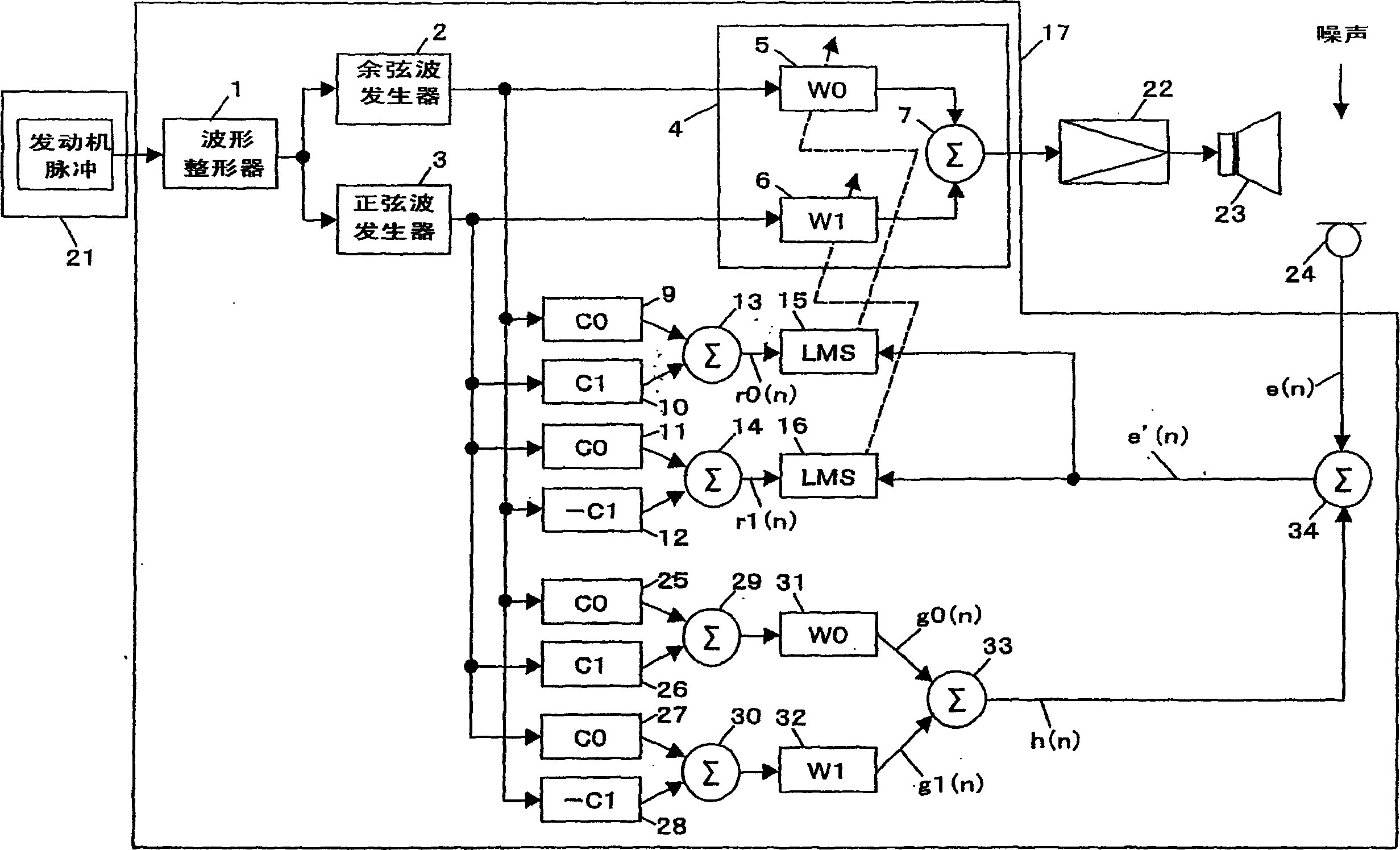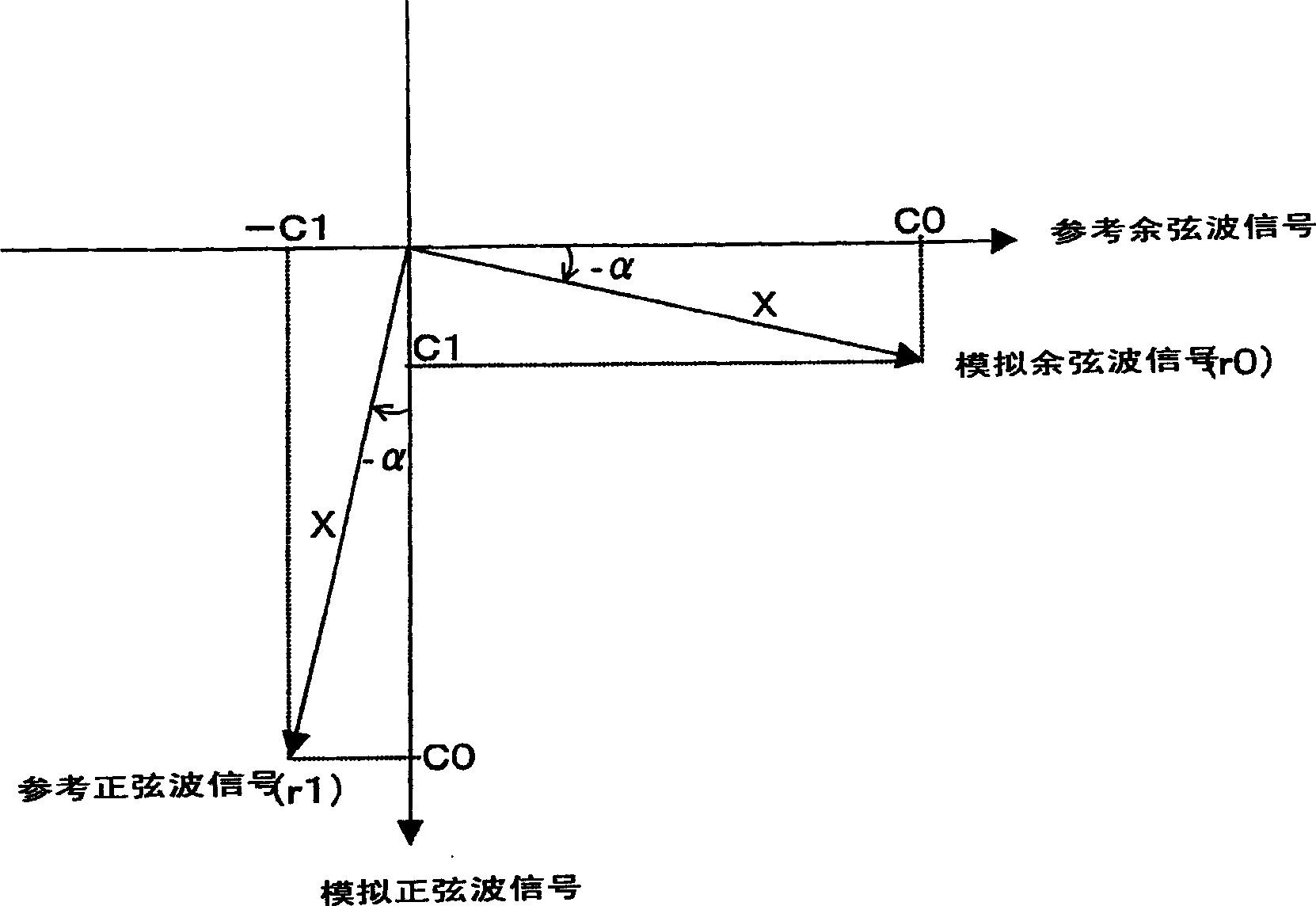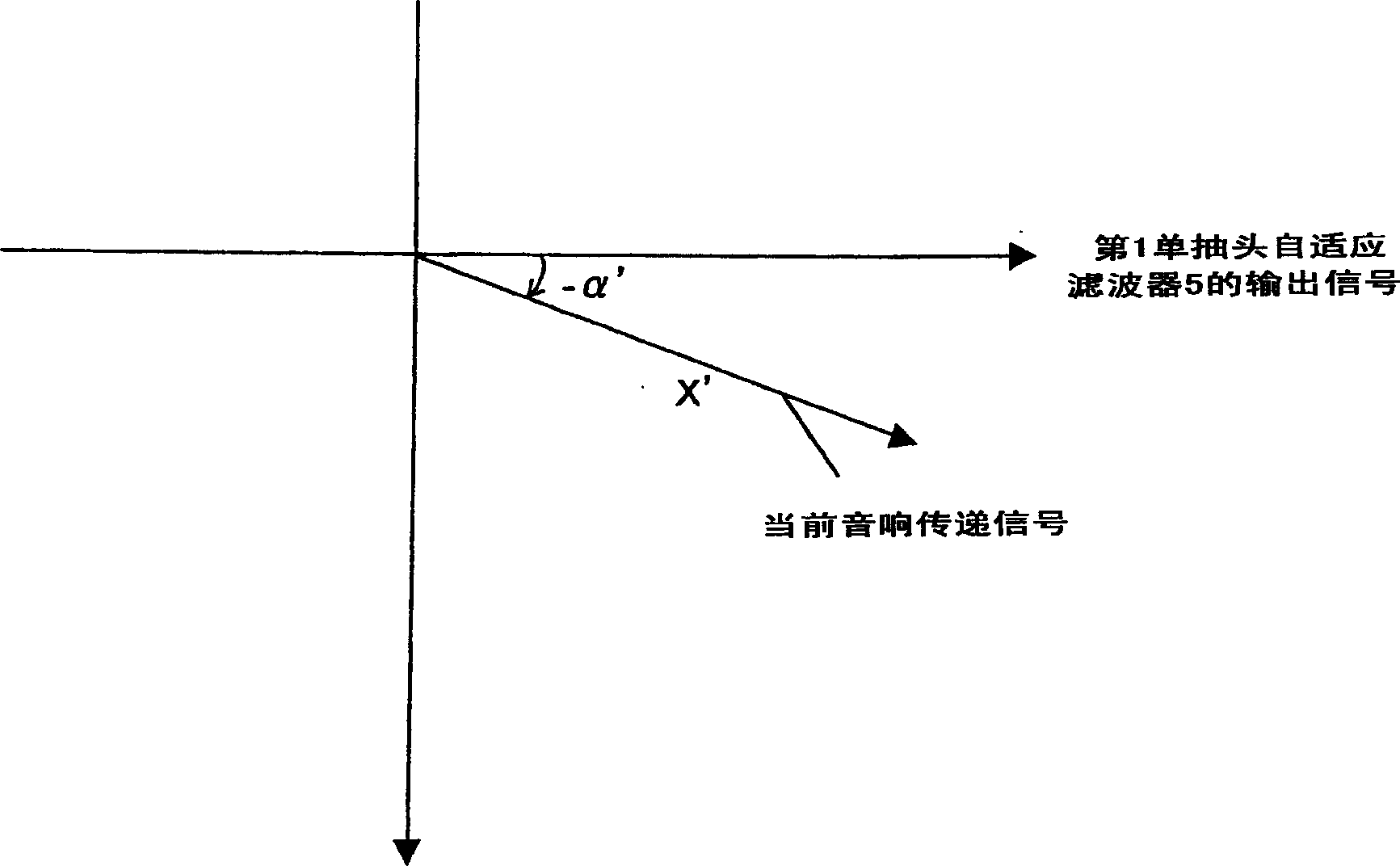Active noise control system
A technology of noise reduction and detection device, which is applied in the fields of noise reduction device, transportation and packaging, active noise control, etc., can solve the problems of low noise reduction effect and so on
- Summary
- Abstract
- Description
- Claims
- Application Information
AI Technical Summary
Problems solved by technology
Method used
Image
Examples
Embodiment approach 1
[0028] Hereinafter, embodiments of the present invention will be described with reference to the drawings. Components that are the same as those of the existing active noise reduction devices shown in the prior art are given the same reference numerals. The present invention will be described, for example, when it is installed in a vehicle or the like to reduce noise generated in a vehicle cabin due to engine vibration.
[0029] figure 1 The active noise reduction device according to Embodiment 1 is shown as a block diagram. figure 1 Among them, the engine 21 is a noise source that generates noise that becomes a problem, and this active noise reduction device operates to reduce the periodic noise radiated from the engine 21 .
[0030]An engine pulse, which is an electrical signal synchronized with the rotation of the engine 21 , is input to the waveform shaper 1 , and waveform shaping is performed while filtering superimposed noise and the like. As this engine pulse, it i...
Embodiment approach 2
[0071] In Embodiment 1 above, it has been explained that the signal obtained by adding the correction signal h to the output signal (error signal e) of the microphone 24 is used in the adaptive control algorithm for updating the filter coefficients W0 and W1 of the adaptive notch filter 4, Therefore, while suppressing overcompensation, the control stability is improved. In Embodiment 2, a method of further adjusting the suppression amount of overcompensation will be described.
[0072] Figure 7 The configuration of the active noise reduction device according to Embodiment 2 is shown as a block diagram. Components that are the same as those of the noise reduction device shown in the above-mentioned embodiments are denoted by the same reference numerals.
[0073] Figure 7 in, with figure 1 The only difference is that a coefficient multiplier 35 is added to the correction signal generator. Here, the correction signal h which is the output signal of the adder 33 is input t...
Embodiment approach 3
[0087] Figure 9 The active noise reduction device according to Embodiment 3 is shown as a block diagram along with its components. The same reference numerals are attached to the same constituent elements as those of the active noise reduction device shown in Embodiment 1 or Embodiment 2 above.
[0088] Figure 9 in, with Figure 7 The only difference is that the output control unit 36 is added to the correction signal generator. The output signal Kh of the coefficient multiplier 35 is now input to the output control section 36 . This output control unit 36 has a memory area for storing the value of the filter coefficient W0 of the first one-tap adaptive filter 5 every time it is updated from the past predetermined time (for example, before the filter coefficient is updated 20 times) to the present, and calculates its change. cumulative value of the quantity. It also has a storage area for storing the value of the filter coefficient W1 of the second single-tap adapti...
PUM
 Login to View More
Login to View More Abstract
Description
Claims
Application Information
 Login to View More
Login to View More - R&D
- Intellectual Property
- Life Sciences
- Materials
- Tech Scout
- Unparalleled Data Quality
- Higher Quality Content
- 60% Fewer Hallucinations
Browse by: Latest US Patents, China's latest patents, Technical Efficacy Thesaurus, Application Domain, Technology Topic, Popular Technical Reports.
© 2025 PatSnap. All rights reserved.Legal|Privacy policy|Modern Slavery Act Transparency Statement|Sitemap|About US| Contact US: help@patsnap.com



